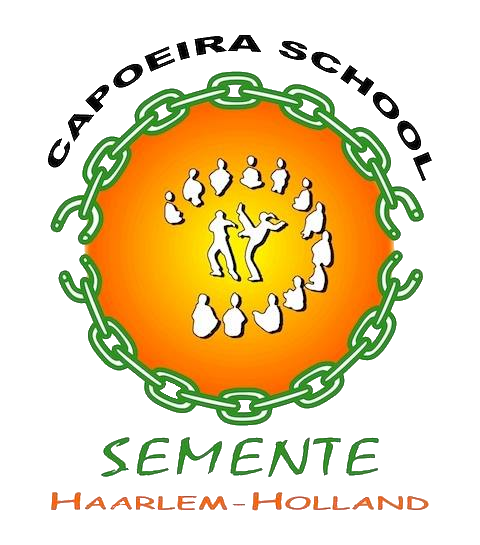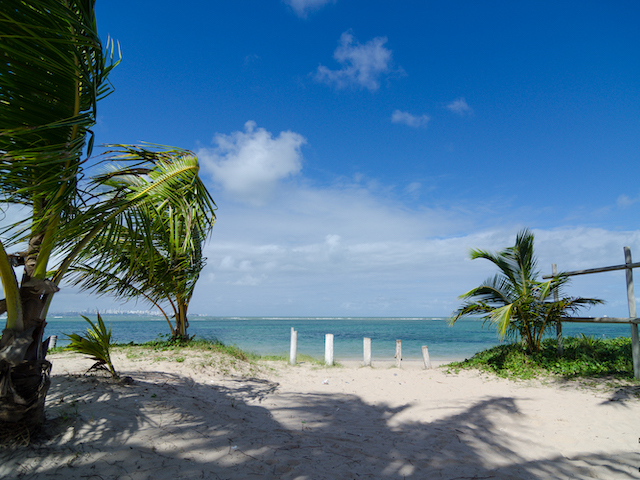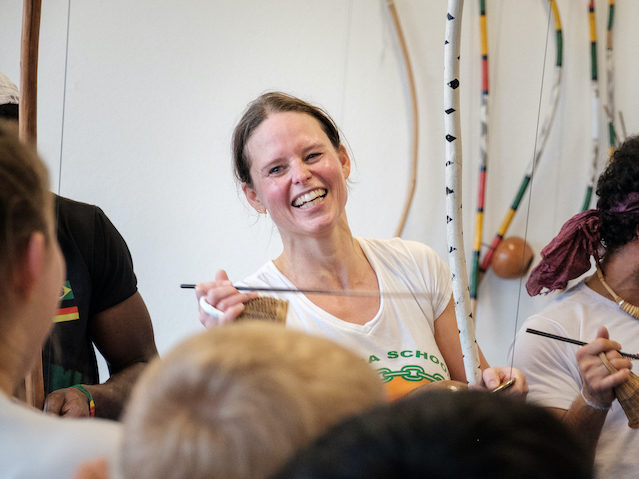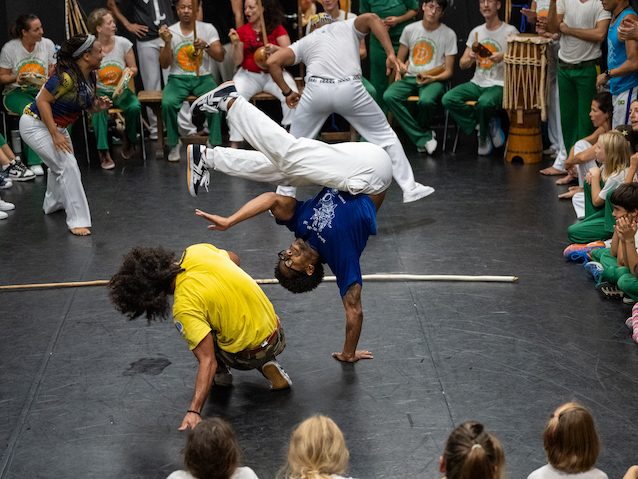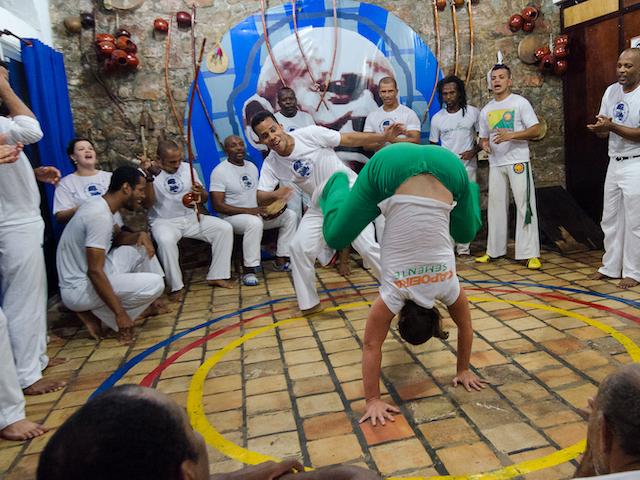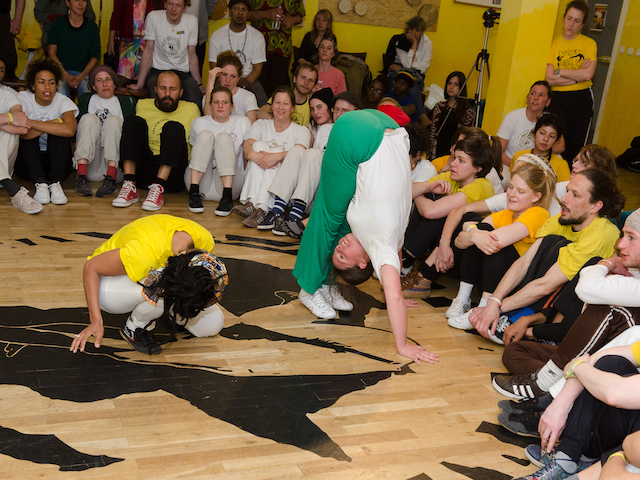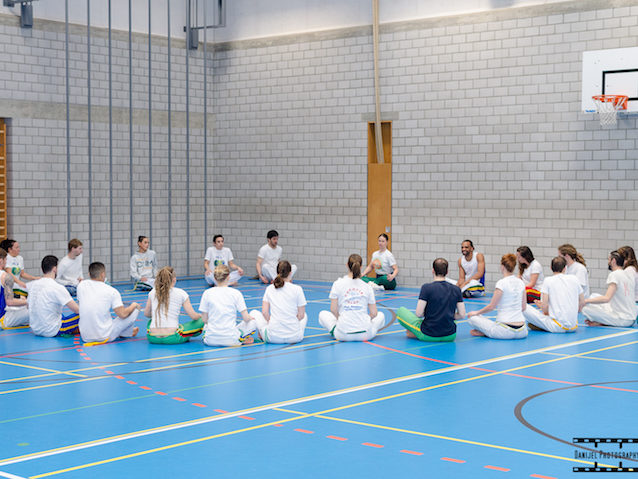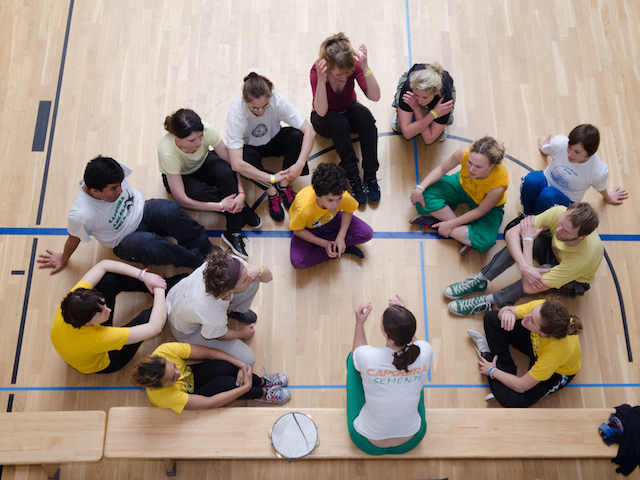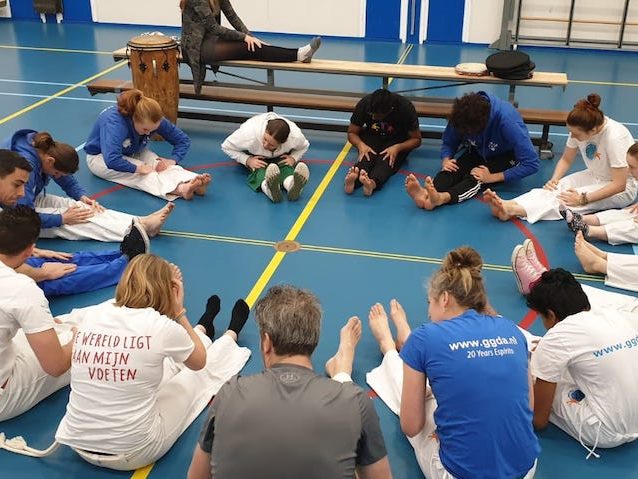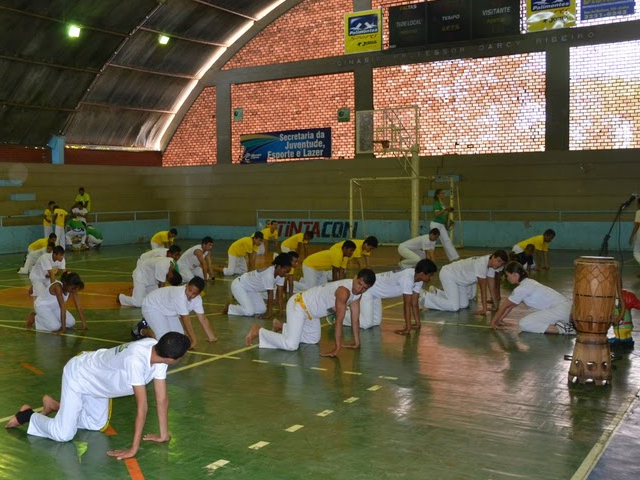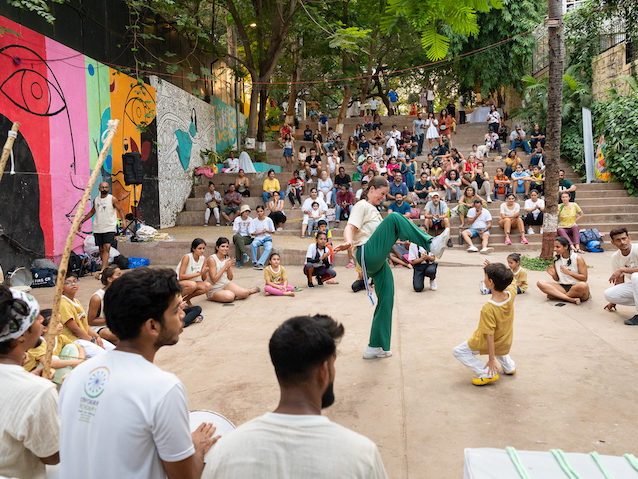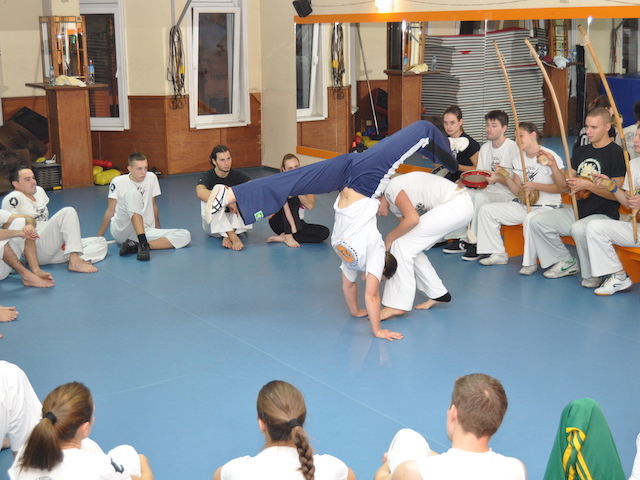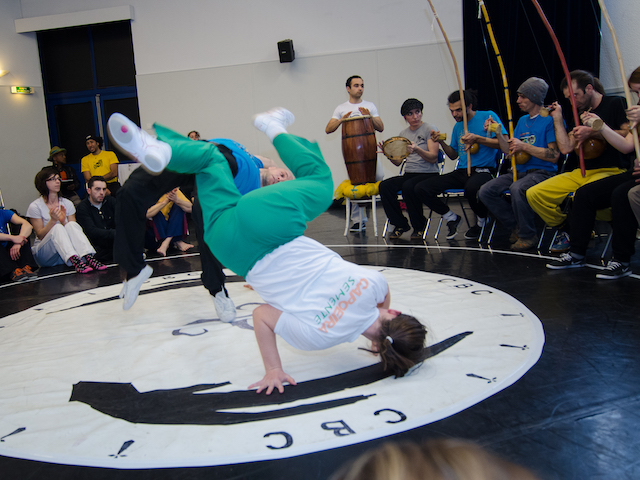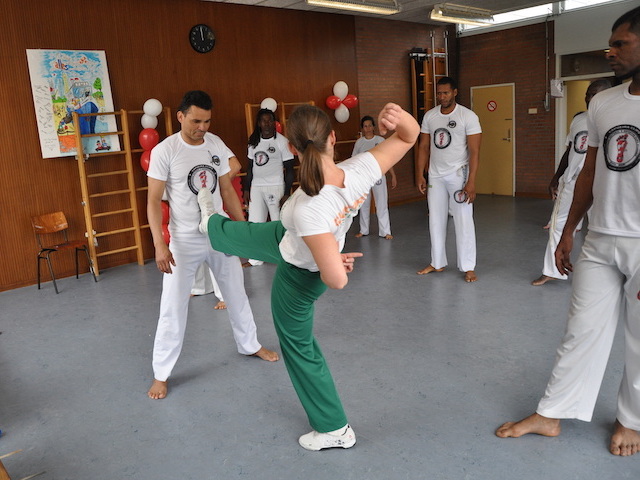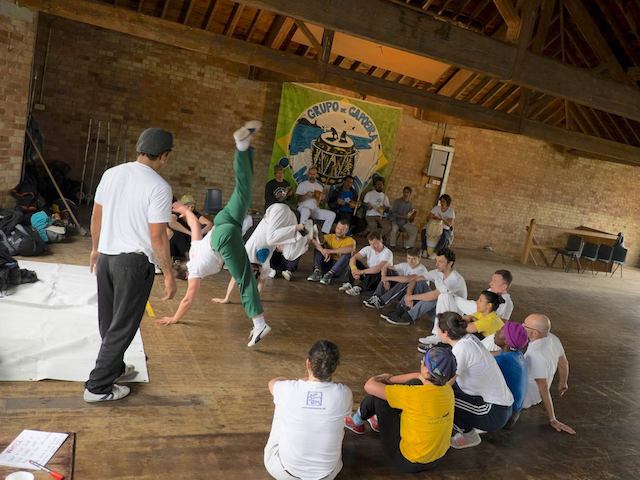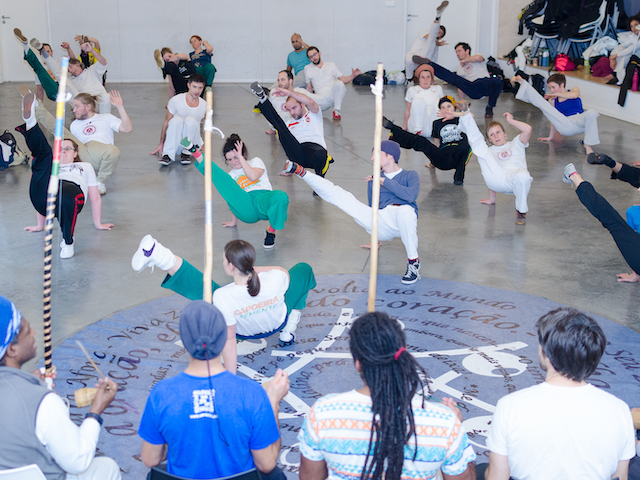Capoeira, Brazilië en slavernij
Capoeira is ontstaan in Brazilië in een tijd van slavernij en slavenhandel. De strijd om fysieke en mentale vrijheid, en gecamoufleerde strategie zijn één van de fundamenten binnen Capoeira. Capoeira bood weerstand tegen onderdrukking en ontbering.
De Capoeira Roda is door de UNESCO uitgeroepen als nationaal cultureel erfgoed van Brazilië. De UNESCO beschrijft Capoeira als volgt:
“… Capoeira is an Afro-Brazilian cultural practice – simultaneously a fight and a dance – that can be interpreted as a tradition, a sport and even an art form. Capoeira players form a circle at the centre of which two players engage with one another. The movements require great bodily dexterity. The other players around the circle sing, chant, clap and play percussive instruments. Capoeira circles are formed by a group of people of any gender, and comprise a master, counter-master and disciples. The master is the bearer and guardian of the knowledge of the circle, and is expected to teach the repertoire and to maintain the group’s cohesion and its observance to a ritual code. The master usually plays a single string percussion instrument, starts the chants, and leads the game’s timing and rhythm. All participants are expected to know how to make and play the instrument, sing a shared repertoire of chants, improvise songs, know and respect the codes of ethics and conduct, and perform the movements, steps and strikes. The capoeira circle is a place where knowledge and skills are learned by observation and imitation. It also functions as an affirmation of mutual respect between communities, groups and individuals and promotes social integration and the memory of resistance to historical oppression…”
Weerstand / Resistençia
In 1888 werd in Brazilië de slavernij officieel afgeschaft. In Nederland was dit in 1863. Toch bestaat (onwettige) slavernij overal ter wereld. Capoeira werd tevens in Brazilië van 1890 tot 1937 officieel verboden. Echter bleef Capoeira weerstand bieden.
Het ontwikkelde verschillende stijlen en tot de dag van vandaag vervult het vele behoeften. De twee meest bekendste stijlen binnen Capoeira zijn Capoeira Angola en Capoeira Regional. Vandaag de dag vindt men Capoeira scholen van beide, en meer stijlen, in meer dan 150 landen.
Capoeira Angola
Capoeira Angola verwijst naar het Afrikaanse land Angola. Vaak wordt een zebra afgebeeld als symbool, dat terugverwijst naar de Zebradans N’golo, gevonden door onderzoekers in Zuid-Angola. Bewonderaars van de beroemde meester Mestre Pastinha (1889 – 1981) stelden de naam Capoeira Angola voor en zo kwam het dat Mestre Pastinha de eerste Capoeira Angola school stichtte.
Capoeira Regional
Capoeira Regional verwijst naar ‘Região’, wat regio in het Portugees betekent en waarmee de regio Bahia wordt bedoeld. Deze naam en stijl werden bedacht door Mestre Bimba (1899 – 1974). De oorspronkelijke naam van de nieuwe stijl was Luta Regional Baiana, wat destijds een aanpassing was van het bestaande Capoeira.
Mestres
Mestre Bimba innoveerde en creëerde een nieuwe stijl terwijl Mestre Pastinha vooral de tradities en geschiedenis levend hield. Sindsdien hebben veel mestres en Capoeiristas, Capoeira aangepast en ontwikkeld en bestaan er veel stijlen.
Ook Mestra Lisette en Capoeira School Semente hebben een bepaalde stijl. Zie de Mestra Lisette en de Capoeira School Semente pagina voor meer uitleg.
In 2024 maakte Klokhuis een mooie aflevering over Capoeira, waarin Mestra Lisette ook wordt geïnterviewd.
Klokhuis TV, aflevering: “Capoeira”, uitzending op 11 oktober 2024, 18.40 op NPO3:
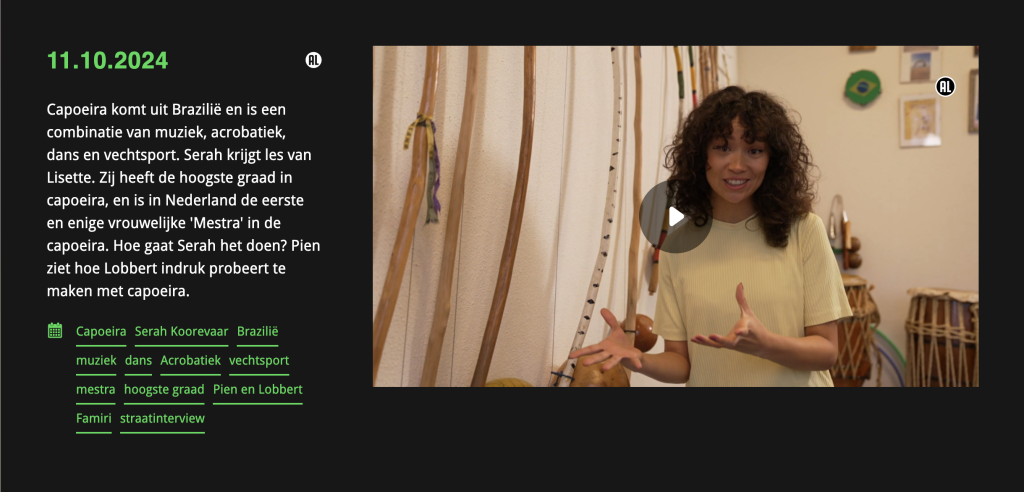
Capoeira Proefles
Voor meer informatie over Capoeira of een Capoeira proefles (€5) graag contact opnemen met Mestra Lisette, 06-47950717 of aanmelden via lisette@capoeirahaarlem.nl.
.
“… En complimenten dat je weer zo’n mooie Roda hebt georganiseerd, echt
ontroerend al die mensen bij elkaar met hetzelfde doel!…” (ouder
kindergroep).
“…Capoeira é tudo o que a boca come…” / “…Capoeira is alles wat de mond eet…”
(Mestre Pastinha (1889 -1981))
.
“… Lembre-se que a surpresa é a melhor arma de uma luta…” / “… Onthoudt dat de verrassing het beste wapen van een gevecht is…”
(Mestre Bimba (1899-1974))
.
“…Capoeira represents history to me. Slave history. Capoeira was a fight against slavery. It was created by the need of the black man to free himself from slavery.
(Mestra Lisette)
.
Within Capoeira there are many styles, many people practicing, many opinions and many truths. The more you travel and the more you question masters, the more you realise that each has their opinion on how Capoeira should be practiced…”
(Mestra Lisette)
.
“…My vision is that there is good and bad Capoeira in every style and in every country. I see beauty in Capoeira Angola, Capoeira Regional and in all other styles…”
(Mestra Lisette)
